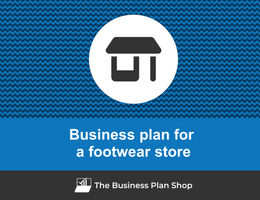How to create a financial forecast for a footwear store?
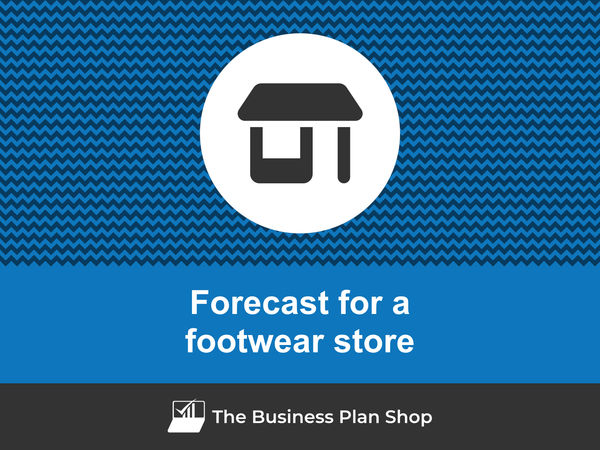
Creating a financial forecast for your footwear store, and ensuring it stays up to date, is the only way to maintain visibility on future cash flows.
This might sound complex, but with the right guidance and tools, creating an accurate financial forecast for your footwear store is not that hard.
In this guide, we'll cover everything from the main goal of a financial projection, the data you need as input, to the tables that compose it, and the tools that can help you build a forecast efficiently.
Without further ado, let us begin!
Why create and maintain a financial forecast for a footwear store?
In order to prosper, your business needs to have visibility on what lies ahead and the right financial resources to grow. This is where having a financial forecast for your footwear store becomes handy.
Creating a footwear store financial forecast forces you to take stock of where your business stands and where you want it to go.
Once you have clarity on the destination, you will need to draw up a plan to get there and assess what it means in terms of future profitability and cash flows for your footwear store.
Having this clear plan in place will give you the confidence needed to move forward with your business’s development.
Having an up-to-date financial forecast for a footwear store is also useful if your trading environment worsens, as the forecast enables you to adjust to your new market conditions and anticipate any potential cash shortfall.
Finally, your footwear store's financial projections will also help you secure financing, as banks and investors alike will want to see accurate projections before agreeing to finance your business.
Need a solid financial forecast?
The Business Plan Shop does the maths for you. Simply enter your revenues, costs and investments. Click save and our online tool builds a three-way forecast for you instantly.

What information is used as input to build a footwear store financial forecast?
A footwear store's financial forecast is only as good as the inputs used to build it.
If you are creating (or updating) the forecast of an existing footwear store, then you mostly need your accounting information, key historical operating non-financial data, and your team’s input on what to expect for the coming years.
If you are building financial projections for a footwear store startup, you will need to have done your research and have a clear picture of your competitive environment and go-to-market strategy so that you can forecast sales accurately.
For a new venture, you will also need a precise list of the resources needed to keep the footwear store running on a day-to-day basis and a list of the equipment and expenditures required to start the business (more on that later).
Let's now take a closer look at the elements that make up your footwear store's financial forecast.
The sales forecast for a footwear store
From experience, it usually makes sense to start your footwear store's financial projection with the revenues forecast.
The inputs used to forecast your sales will include the historical trading data of your footwear store (which can be used as a starting point for existing businesses) and the data collected in your market research (which both new ventures and existing businesses need to project their sales forward).
Your footwear store's sales forecast can be broken down into two key estimates:
- The average price
- The number of monthly transactions
To assess these variables accurately, you will need to consider the following factors:
- Seasonal demand: As the weather changes throughout the year, so does the demand for certain types of footwear. For example, sandals and flip flops may sell more during the summer months, while boots and sneakers may be in higher demand during the colder months.
- Trends and fashion: The footwear industry is heavily influenced by trends and fashion. Your store's average price and number of monthly transactions may be affected by the popularity of certain styles or brands.
- Competition: The presence of other footwear stores in your area can impact your sales forecast. If there are many similar stores nearby, you may need to adjust your prices or marketing strategies to stay competitive and attract customers.
- Consumer buying power: Economic factors such as income levels and consumer confidence can affect the average price of footwear and the number of monthly transactions. When consumers have more disposable income, they may be more willing to spend on higher-priced footwear items.
- Online shopping: With the rise of e-commerce, more and more consumers are turning to online shopping for their footwear needs. This can have an impact on your store's average price and number of monthly transactions, as well as the need for a strong online presence and marketing strategy.
Once you have a sales forecast in place, the next step will be to work on your overhead budget. Let’s have a look at that now.
Need inspiration for your business plan?
The Business Plan Shop has dozens of business plan templates that you can use to get a clear idea of what a complete business plan looks like.

The operating expenses for a footwear store
The next step is to estimate the expenses needed to run your footwear store on a day-to-day basis.
These will vary based on the level of sales expected, and the location and size of your business.
But your footwear store's operating expenses should include the following items at a minimum:
- Rent: This includes the cost of leasing a physical storefront for your footwear store.
- Utilities: You will need to pay for electricity, water, and other utilities to keep your store running.
- Inventory: This includes the cost of purchasing and stocking footwear products in your store.
- Staff Costs: You will need to pay your employees' salaries, benefits, and potentially other costs such as training and uniforms.
- Marketing and Advertising: Promoting your footwear store through various channels such as social media, print ads, and events.
- Accountancy Fees: You may need to hire an accountant to help with tax preparation and other financial aspects of your business.
- Insurance Costs: Protecting your store and inventory with insurance against theft, damage, and liability.
- Software Licenses: You may need to purchase software to help manage inventory, sales, and other aspects of your store.
- Banking Fees: This includes fees for processing credit and debit card payments, as well as maintaining a business bank account.
- Supplies: This includes the cost of buying office supplies, packaging materials, and other necessary items for your store.
- Maintenance and Repairs: Keeping your store in good condition and fixing any issues that may arise.
- Professional Services: You may need to hire outside help for legal advice, graphic design, or other professional services.
- Taxes: You will need to pay various taxes, such as sales tax and income tax, as required by your local government.
- Renters Insurance: Protecting your store against damages and losses that may not be covered by your regular insurance.
- Delivery and Shipping Costs: If you offer online sales or have a delivery service for your customers, you will need to cover the cost of shipping and delivery.
This list is, of course, not exhaustive, and you'll have to adapt it according to your precise business model and size. A small footwear store might not have the same level of expenditure as a larger one, for example.
What investments are needed to start or grow a footwear store?
Your footwear store financial forecast will also need to include the capital expenditures (aka investments in plain English) and initial working capital items required for the creation or development of your business.
For a footwear store, these could include:
- Store Renovations: This includes any major renovations or upgrades to the physical space of your footwear store. This could include things like new flooring, lighting, or fixtures to enhance the overall shopping experience for your customers.
- Inventory Management System: A reliable inventory management system is crucial for a footwear store to keep track of stock levels, sales, and orders. Investing in a good system will help you streamline your operations and minimize errors.
- Point-of-Sale (POS) System: A POS system is essential for processing sales and managing customer transactions. It also helps with inventory management, employee scheduling, and tracking sales performance.
- Furniture and Fixtures: This includes all the necessary furniture and fixtures for your store, such as display shelves, seating, and cash counters. These items not only contribute to the overall aesthetic of your store but also serve a functional purpose.
- Security System: Protecting your store and inventory is crucial for any business. Investing in a security system, including cameras, alarms, and sensors, can help prevent theft and provide peace of mind for you and your customers.
Again, this list will need to be adjusted according to the size and ambitions of your footwear store.
Need a convincing business plan?
The Business Plan Shop makes it easy to create a financial forecast to assess the potential profitability of your projects, and write a business plan that’ll wow investors.

The financing plan of your footwear store
The next step in the creation of your financial forecast for your footwear store is to think about how you might finance your business.
You will have to assess how much capital will come from shareholders (equity) and how much can be secured through banks.
Bank loans will have to be modelled so that you can separate the interest expenses from the repayments of principal, and include all this data in your forecast.
Issuing share capital and obtaining a bank loan are two of the most common ways that entrepreneurs finance their businesses.
What tables compose the financial plan for a footwear store?
Now let's have a look at the main output tables of your footwear store's financial forecast.
The forecasted profit & loss statement
The profit & loss forecast gives you a clear picture of your business’ expected growth over the first three to five years, and whether it’s likely to be profitable or not.
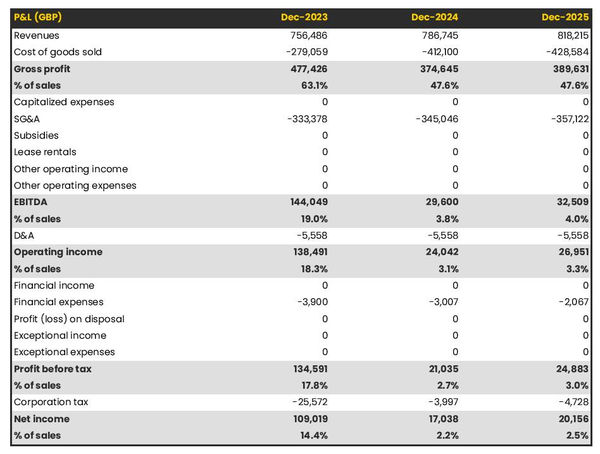
A healthy footwear store's P&L statement should show:
- Sales growing at (minimum) or above (better) inflation
- Stable (minimum) or expanding (better) profit margins
- A healthy level of net profitability
This will of course depend on the stage of your business: numbers for an established footwear store will look different than for a startup.
The projected balance sheet
Your footwear store's forecasted balance sheet enables you to assess your financial structure and working capital requirements.
It is composed of three types of elements: assets, liabilities and equity:
- Assets: represent what the business owns and uses to produce cash flows. It includes resources such as cash, equipment, and accounts receivable (money owed by clients).
- Liabilities: represent funds advanced to the business by lenders and other creditors. It includes items such as accounts payable (money owed to suppliers), taxes due and loans.
- Equity: is the combination of what has been invested by the business owners and the cumulative profits and losses generated by the business to date (which are called retained earnings). Equity is a proxy for the value of the owner's stake in the business.
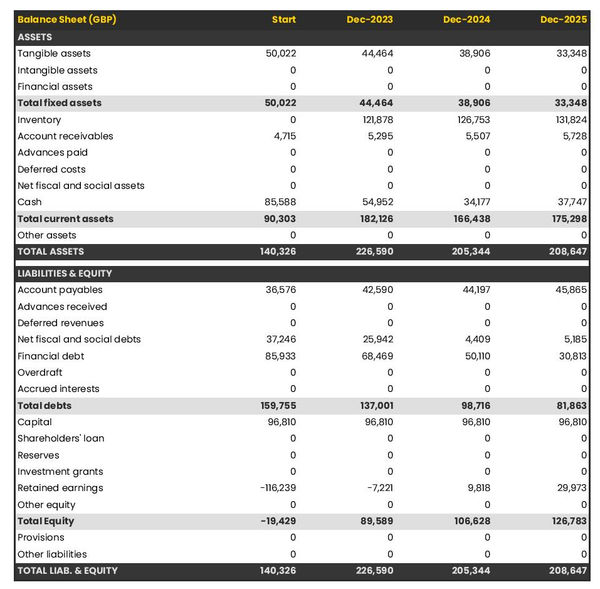
The cash flow projection
The cash flow forecast of your footwear store will show how much cash the business is expected to generate or consume over the next three to five years.
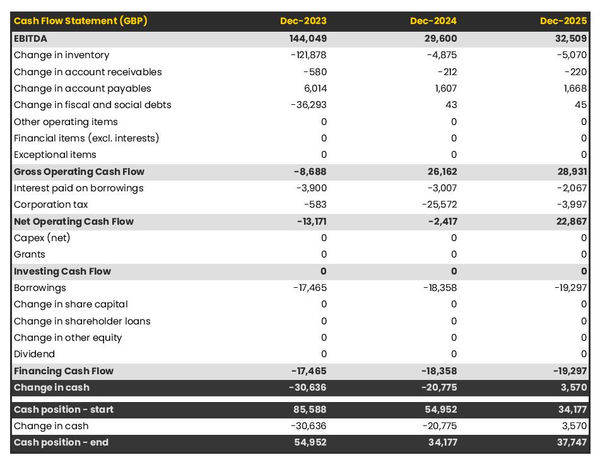
There are multiple ways of presenting a cash flow forecast but from experience, it is better to organise it by nature in order to clearly show these elements:
- Operating cash flow: how much cash is generated by the footwear store's operations
- Investing cash flow: what is the business investing to expand or maintain its equipment
- Financing cash flow: is the business raising additional funds or repaying financiers (debt repayment, dividends)
Your cash flow forecast is the most important element of your overall financial projection and that’s where you should focus your attention to ensure that your footwear store is adequately funded.
Note: if you are preparing a financial forecast in order to try to secure funding, you will need to include both a yearly and monthly cash flow forecast in your footwear store's financial plan.
Need a solid financial forecast?
The Business Plan Shop does the maths for you. Simply enter your revenues, costs and investments. Click save and our online tool builds a three-way forecast for you instantly.

Which tool should you use to create your footwear store's financial projections?
Building a footwear store financial forecast is not difficult provided that you use the right tool for the job. Let’s see what options are available below.
Using online financial forecasting software to build your footwear store's projections
The modern and easiest way is to use an online financial forecasting tool such as the one we offer at The Business Plan Shop.
There are several advantages to using specialised software:
- You can easily create your financial forecast by letting the software take care of the financial calculations for you without errors
- You have access to complete financial forecast templates
- You get a complete financial forecast ready to be sent to your bank or investors
- You can easily track your actual financial performance against your financial forecast, and recalibrate your forecast as the year goes by
- You can create scenarios to stress test your forecast's main assumptions
- You can easily update your forecast as time goes by to maintain visibility on future cash flows
- You have a friendly support team on standby to assist you when you are stuck
- It’s cost-efficient and much cheaper than using an accountant or consultant (see below)
If you are interested in this type of solution, you can try our projection software for free by signing up here.
Hiring a financial consultant or chartered accountant
Hiring a consultant or chartered accountant is also an efficient way to get a professional footwear store financial projection.
As you can imagine, this solution is much more expensive than using software. From experience, the creation of a simple financial forecast over three years (including a balance sheet, income statement, and cash flow statement) is likely to start around £700 or $1,000 excluding taxes.
The indicative estimate above, is for a small business, and a forecast done as a one-off. Using a financial consultant or accountant to track your actuals vs. forecast and to keep your financial forecast up to date on a monthly or quarterly basis will naturally cost a lot more.
If you choose this solution, make sure your service provider has first-hand experience in your industry, so that they may challenge your assumptions and offer insights (as opposed to just taking your figures at face value to create the forecast’s financial statements).
Why not use a spreadsheet such as Excel or Google Sheets to build your footwear store's financial forecast?
Creating an accurate and error-free footwear store financial forecast with a spreadsheet is very technical and requires a deep knowledge of accounting and an understanding of financial modelling.
Very few business owners are financially savvy enough to be able to build a forecast themselves on Excel without making mistakes.
Lenders and investors know this, which is why forecasts created on Excel by the business owner are often frowned upon.
Having numbers one can trust is key when it comes to financial forecasting and to that end using software is much safer.
Using financial forecasting software is also faster than using a spreadsheet, and, with the rise of artificial intelligence, software is also becoming smarter at helping us analyse the numbers to make smarter decisions.
Finally, like everything with spreadsheets, tracking actuals vs. forecasts and keeping your projections up to date as the year progresses is manual, tedious, and error-prone. Whereas financial projection software like The Business Plan Shop is built for this.
Need a convincing business plan?
The Business Plan Shop makes it easy to create a financial forecast to assess the potential profitability of your projects, and write a business plan that’ll wow investors.

Use our financial projection templates for inspiration
The Business Plan Shop has dozens of financial forecast templates available.
Our examples contain a complete business plan with a financial forecast and a written presentation of the company, the team, the strategy, and the medium-term objectives.
Whether you are just starting out or already have your own footwear store, looking at our financial forecast template is a good way to:
- Understand what a complete business plan should look like
- Understand how you should model financial items for your footwear store

Takeaways
- Having a financial forecast enables you to visualise the expected growth, profitability, and cash generation for your business over the next three to five years.
- Tracking actuals vs. forecast and keeping your financial projections up-to-date is the only way to get a view on what your footwear store future cash flows may look like.
- Using financial forecasting software is the mordern and easy way to create and maintain your forecasts.
This is the end of our guide on how to build the financial forecast for a footwear store, we hope you found it useful. Don't hesitate to contact us if you want to share your feedback or have any questions.
Need inspiration for your business plan?
The Business Plan Shop has dozens of business plan templates that you can use to get a clear idea of what a complete business plan looks like.

Also on The Business Plan Shop
Know someone who owns or is thinking of starting a footwear store? Share our forecasting guide with them!




